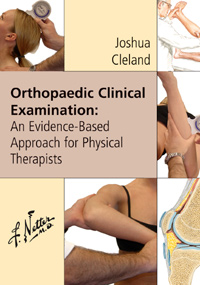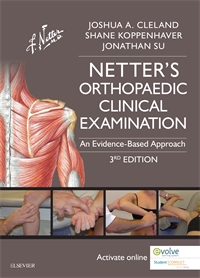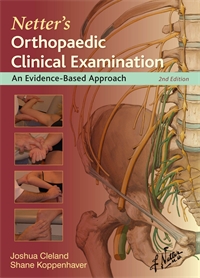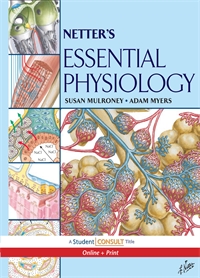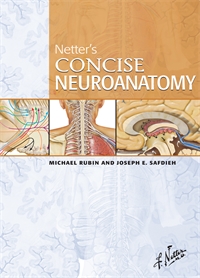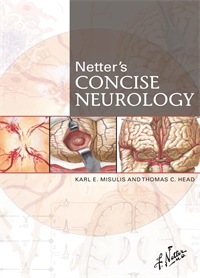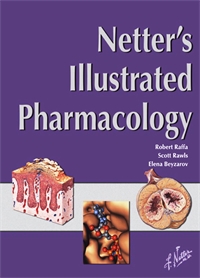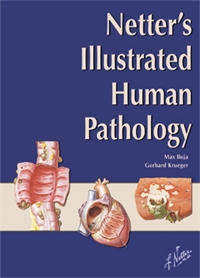Orthopaedic Clinical Examination - Cleland 1E
An Evidence-Based Approach for Physical Therapists
Author: Joshua Cleland
ISBN: 9781929007875
- Page 9: Specificity of Diagnostic Test
- Page 10: Specificity of Diagnostic Test
- Page 12: Fagan's Nomogram
- Page 16: Nomogram Representing the Change In Pretest Probability
- Page 16: Probability and Likelihood Ratios
- Page 18: Positive Likelihood Ratio
- Page 19: Positive Likelihood Ratio
- Page 40: Bony Framework of Head and Neck
- Page 41: Mandible
- Page 42: Lateral Skull
- Page 43: Temporomandibular Joint
- Page 44: Temporomandibular Joint Mechanics
- Page 45: Temporomandibular Joint Ligaments
- Page 46: Muscles Involved in Mastication
- Page 47: Muscles Involved in Mastication
- Page 48: Posterior and Lateral Muscles Involved in Mastication
- Page 49: Posterior and Lateral Muscles Involved in Mastication
- Page 50: Floor of Mouth
- Page 51: Floor of Mouth
- Page 52: Mandibular Nerve
- Page 53: Mandibular Nerve
- Page 55: Range-of-Motion Measurements of the Temporomandibular Joint
- Page 59: Lateral Palpation of the Temporomandibular Joint
- Page 59: Posterior Palpation of the Temporomandibular Joint Through External Auditory Means
- Page 59: Palpation of the Temporalis
- Page 59: Palpation of the Masseter
- Page 59: Palpation of the Medial Pterygoid
- Page 61: Assessment of Pain During Passive Opening
- Page 62: Temporomandibular Traction
- Page 63: Detecting Joint Sounds During Active Motion in Patients With Temporomandibular Disorders
- Page 64: Joint Play and End-Feel Assessment of the Temporomandibular Joint (TMJ)
- Page 67: Bilateral Temporomandibular Compression
- Page 68: Palpation of the Temporalis Muscle
- Page 70: The Association of Oral Habits With Temporomandibular Disorders
- Page 71: Differentiating Between Patients With and Without Temporomandibular Joint Disorders
- Page 72: Detecting Osteoarthrosis in the Temporomandibular Joint
- Page 75: Detecting Anterior Disc Displacement of the Temporomandibular Joint
- Page 81: Accuracy of Combined Tests for Detecting Anterior Disc Displacement with Reduction
- Page 83: Combined Tests for Detecting Anterior Disc Displacement Without Reduction
- Page 84: Diagnostic Criteria for Detecting Intra-articular Temporomandibular Disorders
- Page 85: Accuracy of Clinical Criteria for Classifying Internal Derangement and Arthrosis
- Page 86: Identifying Patients with Craniomandibular Pain
- Page 87: Identifying Patients with Craniomandibular Pain
- Page 87: Identifying Patients with Craniomandibular Pain
- Page 92: Bony Framework of Head and Neck
- Page 93: Cervical Vertebrae
- Page 94: Joints of the Cervical Spine
- Page 95: Joints of the Cervical Spine
- Page 96: Ligaments of the Atlanto-occipital Joint
- Page 98: Spinal Ligaments
- Page 101: Anterior Muscles of the Neck
- Page 103: Suprahyoids/Infrahyoids
- Page 105: Scalene and Prevertebral Muscles
- Page 107: Posterior Muscles of the Neck
- Page 109: Nerves of the Neck
- Page 112: Positioning of Inclinometer to Measure Flexion and Extension
- Page 112: Measurement of Flexion
- Page 112: Measurements of Extension
- Page 112: Positioning of Inclinometer to Measure Side Bending
- Page 112: Measurement of Side Bending to the Right
- Page 115: Testing Rotation of C1-C2
- Page 115: Testing Stiffnes of 1st Rib
- Page 117: Testing Side Bending of C5-C6
- Page 118: Testing Flexion with Overpressure
- Page 118: Testing Side Bending with Overpressure
- Page 121: Cervical Compression Test
- Page 122: Neck Distraction Test
- Page 122: Traction Test
- Page 123: Shoulder Abduction Test
- Page 126: Cervical Zygapophyseal Pain Syndromes
- Page 127: Cervical Zygapophyseal Pain Syndromes
- Page 127: Posteroanterior Central Glides to the Mid Cervical Spine
- Page 128: Cervical Radiculopathy
- Page 129: Spurling A Test
- Page 129: Spurling B Test
- Page 131: Cervical Radiculopathy: Pin-Prick Sensation Testing
- Page 132: Cervical Radiculopathy: Muscle Stretch Reflexes
- Page 135: Upper Limb Tension Test A
- Page 135: Upper Limb Tension Test B
- Page 136: Cervical Instability
- Page 137: Sharp-Purser Test
- Page 138: Cervical Cord Compression
- Page 142: Thoracic Vertebrae
- Page 143: Lumbar Vertebrae
- Page 144: Sternocostal Articulations: Anterior View
- Page 144: T7, T8, and T9 vertebrae: Posterior View
- Page 145: Joints of the Thoracic Spine
- Page 146: Joints of the Lumbar Spine
- Page 147: Costovertebral Ligaments
- Page 148: Thoracolumbar Ligaments
- Page 151: Thoracolumbar Muscles: Superficial Layers
- Page 153: Thoracolumbar Muscles: Intermediate Layer
- Page 155: Thoracolumbar Muscles: Deep Layer
- Page 156: Muscles of Anterior Abdominal Wall
- Page 157: Thoracolumbar Fascia
- Page 158: Nerves of the Thoracic Spine
- Page 159: Nerves of the Lumbar Spine
- Page 161: Nerves of the Lumbar Spine
- Page 163: Thoracic Zygapophyseal Joint Pain Referral Patterns
- Page 163: Thoracic Zygapophyseal Joint Pain Referral Patterns
- Page 165: Lumbar Zygapophyseal Joint Pain Referral Patterns
- Page 168: Inclinometer Placement at the Spinous Process of the 12th Thoracic Vertebra
- Page 169: Measurement of Thoracolumbar Flexion
- Page 169: Measurement of Thoracolumbar Extension
- Page 170: Assessment of Posteroanterior Segmental Mobility
- Page 173: Flexion-Side Bending-Rotation
- Page 173: Extension-side Bending-Rotation
- Page 175: Motion Palpation of Side Bending Right
- Page 175: Motion Palpation Seated
- Page 176: Centralization Phenomena
- Page 179: Prone Instability Test
- Page 179: Prone Instability Test
- Page 180: Straight-Leg Raise (SLR)
- Page 183: Strength Testing of Extensor Hallucis Longus Muscle
- Page 183: Pin-Prick Test
- Page 185: Passive Intervertebral Mobility Testing Rotation
- Page 188: Lumbosacral Radiculopathy: Physical Examination
- Page 191: Straight-Leg Raise (SLR)
- Page 191: Straight-Leg Raise (SLR) with Sensitizing Maneuver of Vervical Flexion
- Page 193: Ankylosing Spondylitis: History
- Page 202: Sacroiliac Region
- Page 203: Sacrum and coccyx
- Page 204: Hip (Coxal) Bone
- Page 205: Sex Differences of Pelvis
- Page 206: Sacroiliac Joint
- Page 207: Sacroiliac Region Ligaments
- Page 208: Sacroiliac Region Muscles
- Page 209: Sacroiliac Dysfunction
- Page 211: Sacroiliac Region Nerves
- Page 212: Sacroiliac Joint Pain Referral Patterns
- Page 213: Prone Knee Bend Test
- Page 213: Prone Knee Bend Test
- Page 215: Assessment of Iliac Crest Symmetry in Standing
- Page 217: Standing Flexion Test
- Page 219: Distraction Test
- Page 221: Patrick Test
- Page 222: Sacral Thrust Test
- Page 225: Thigh Thrust
- Page 226: Compression Test
- Page 228: Gaenslen Test
- Page 229: Gillet Test
- Page 230: Spring Test
- Page 231: Resisted Abduction of the Hip
- Page 235: Indentifying Patients Likely to Benefit from Spinal Manipulation
- Page 240: Hip (Coxal) Bone and Femur
- Page 241: Hip and Pelvis Joints
- Page 242: Ligaments of Hip and Pelvis
- Page 245: Posterior Muscles of Hip and Thigh
- Page 246: Anterior Muscles of Thigh
- Page 249: Nerves of Thigh
- Page 250: Nerves of Thigh
- Page 251: Passive Range-of-Motion Measurements of the Knee
- Page 251: Passive Range-of-Motion Measurements of the Knee
- Page 253: Range-of-Motion Measurements of the Hip
- Page 253: Range-of-Motion Measurements of the Hip
- Page 255: Range-of-Motion Measurements: Iliotibial Band Length (Modified Ober Test)
- Page 255: Range-of-Motion Measurements: Iliotibial Band Length (Ober Test)
- Page 257: Suspected Intra-articular Pathology: Anterior-Posterior Mobility Test
- Page 257: Suspected Intra-articular Pathology: Flexion-Adduction-Internal Rotation Test (Click Test)
- Page 258: Muscle Length Measurements with Bubble Inclinometer: External Rotators of the Hip
- Page 258: Muscle Length Measurements with Bubble Inclinometer: Internal Rotators of the Hip
- Page 259: Detecting Osteoarthritis of the Hip: Utility of the Historical Examination
- Page 261: Determining Iliosacral Dysfunction: The Long Sitting Test
- Page 261: Determining Iliosacral Dysfunction: The Long Sitting Test
- Page 262: Detecting Osteoarthritis of the Hip: The Cyriax Capsular Pattern
- Page 263: Detecting Osteoarthritis of the Hip: The Cyriax Capsular Pattern
- Page 265: Detecting Acetabular Labral Tears: Internal Rotation-Flexion-Axial Compression Maneuver
- Page 265: Detecting Acetabular Labral Tears
- Page 266: Flexion-Adduction Test
- Page 267: Avascular Necrosis of the Hip
- Page 268: Detecting Developmental Dysplasia of the Hip in Infants: Limited Hip
- Page 269: Detecting Piriformis Syndrome: The FAIR Test
- Page 272: Knee
- Page 272: Patella
- Page 273: Femur
- Page 273: Tibia and Fibula
- Page 274: Sagittal Knee
- Page 275: Posterior Ligaments of Knee
- Page 276: Interior and Anterior Ligaments of Knee
- Page 279: Anterior Muscles of Knee
- Page 281: Lateral and Medial Muscles of Knee
- Page 282: Nerves of Thigh and Knee
- Page 283: Nerves of Thigh and Knee
- Page 284: Nerves of Thigh and Knee
- Page 287: Measurement of Active Knee Flexion Range of Motion
- Page 288: Assessment of End-Feel for Knee Flexion
- Page 290: Detecting Cardinal Signs of Inflammation of Knee: Fluctuation Test
- Page 291: Palpation of Lateral Joint Line in Patients with Osteoarthritis of Knee
- Page 291: Palpation of Medial Joint Line in Patients with Osteoarthritis of Knee
- Page 292: Patients with Osteoarthritis of Kniee
- Page 295: Testing Integrity of Anterior Cruciate Ligament Using Lachman Test
- Page 296: Examination of Mediolateral Patellar Tilt
- Page 297: Examination of Mediolateral Patellar Orientation
- Page 298: Examination of Anterior or Posterior Patellar Tilt
- Page 299: Examination of Patellar Rotation
- Page 300: Quadriceps Angle Measurements
- Page 301: A-Angle: The Relationship Between the Longitudinal Axis of the Patella and the Patellar Tendon
- Page 302: Detecting Anterior Cruciate Ligament Ruptures
- Page 305: Detecting Anterior Cruciate Ligament Ruptures: The Anterior Drawer Test
- Page 307: Detecting Anterior Cruciate Ligament Ruptures: Pivot Shift Test
- Page 308: Detecting Posterior Cruciate Ligament Ruptures: Posterior Drawer Test
- Page 309: Detecting Fibular Collateral Ligament Ruptures: Varus Stress Test
- Page 309: Detecting Tibial Collateral Ligament Ruptures
- Page 310: Detecting Tibial Collateral Ligament Ruptures: Valgus Stress Test
- Page 311: Detecting Meniscal Tears
- Page 312: Detecting Meniscal Tears: McMurray Test with Internal Rotation of Tibia
- Page 312: Detecting Meniscal Tears: McMurray Test with External Rotation of Tibia
- Page 314: Diagnosing a Meniscal Lesion: Apley Grinding Test
- Page 317: Types of Fractures of Distal Femur
- Page 322: Bones of Foot
- Page 323: Ankle
- Page 324: Foot
- Page 325: Posterior Ankle
- Page 326: Lateral Ligaments ofAnkle
- Page 327: Medial Ligaments of Ankle
- Page 328: Plantar Ligaments of Foot
- Page 329: Plantar Ligaments of Foot
- Page 331: Lateral Muscles of Leg
- Page 332: Posterior Muscles of Leg
- Page 333: Dorsum of Foot
- Page 334: Muscles of Sole of Foot, First Layer
- Page 335: Muscles of Sole of Foot, Second Layer
- Page 336: Muscels of Sole of Foot, Third Layer
- Page 337: Interosseous Muscles of Sole of Foot
- Page 338: Interosseous Muscles of Sole of Foot
- Page 340: Tibial and Fibular Nerves
- Page 341: Tibial and Fibular Nerves
- Page 343: Measurements of Relaxed Calcaneal Stance Position
- Page 345: Goniometric Measurements: Weight-Bearing Lunge Measurements of Ankle Dorsiflexion
- Page 345: Goniometric Measurements: Measurement of Dorsiflexion with Modified Lunge Test
- Page 346: Measurement of Navicular Height
- Page 347: Assessment of Medial Arch Height: Measurement of Arch Angle
- Page 348: Measuring Forefoot Position: Determination of Forefoot Varus and Valgus
- Page 349: Proprioceptive Measures: Dorsiflexion-Compression Test
- Page 351: Measuring Ankle Joint Swelling: Start of Figure-of-Eight Measurement
- Page 351: Measuring Ankle Joint Swelling: Figure-of-Eight Measurement Continued
- Page 351: Measuring Ankle Joint Swelling: Completed Figure-of-Eight Measurement
- Page 353: Detecting Ligamentous Injuries: Tibiofibular Syndesmosis (Squeeze Test)
- Page 355: Detecting Ligamentous Injuries of Lateral Ankle: Anterior Drawer Test
- Page 357: Detecting Anterolateral Ankle Impingement: Impingement Sign, Dorsiflexion
- Page 357: Detecting Anterolateral Ankle Impingement: Impingement Sign, Plantarflexion
- Page 358: Detecting Achilles Tendon Tears: Calf Squeeze
- Page 359: Detecting Plantar Fasciitis: Windlass Test, Weight Bearing
- Page 359: Detecting Plantar Fasciitis: Windlass Test, Non-Weight Bearing
- Page 360: Accuracy of the Functional Hallux Limitus Test to Predict Abnormal Excessive Midtarsal Function During Gait
- Page 361: Ottawa Ankle Rules
- Page 366: Superior and Inferior Clavicle
- Page 366: Humerus and Scapula
- Page 367: Shoulder Joint
- Page 368: Shoulder Joint
- Page 369: Scapulohumeral Rhythm
- Page 370: Shoulder Ligaments
- Page 372: Posterior Muscles of Shoulder
- Page 373: Anterior Muscles of Shoulder
- Page 374: Muscles of Rotator Cuff
- Page 375: Muscles of Rotator Cuff
- Page 377: Anterior Axilla
- Page 379: Shoulder Range-Of-Motion Measurements: Internal Rotation
- Page 379: Shoulder Range-Of-Motion Measurements: External Rotation
- Page 380: Measuring Internal Rotation: Hand Behind Back Method
- Page 381: Shoulder Assessment Using Cyriax Schema
- Page 382: Detecting Scapular Asymmetry During Static and Dynamic Activity: Lateral Slide Test Position 1
- Page 383: Detecting Scapular Asymmetry During Static and Dynamic Activity: Lateral Slide Test Position 3
- Page 383: Detecting Scapular Asymmetry During Static and Dynamic Activity: Lateral Slide Test Position 2
- Page 385: Detecting Shoulder Instability: Load and Shift Test Anterior
- Page 386: Classifying Shoulder Disorders
- Page 387: Shoulder Instability
- Page 388: Apprehension Test
- Page 389: Relocation Test
- Page 390: Anterior Release Test
- Page 391: Detecting Labral Tears: Anterior Slide Test
- Page 393: Detecting Labral Tears: Crank Test
- Page 395: Detecting Labral Tears: Active Compression Test
- Page 396: Detecting Labral Tears: Active Compression Test with External Rotation
- Page 398: Detecting Labral Tears: SLA Prehension Test with Internal Rotation
- Page 398: Detecting Labral Tears: SLA Prehension Test with External Rotation
- Page 400: Detecting Subacromial Impingement: Hawkins and Kennedy Test
- Page 401: Detecting Subacromial Impingement: Neer Test
- Page 403: Detecting Subacromial Impingement: Horizontal Adduction Test
- Page 403: Detecting Subacromial Impingement: Yocum Test
- Page 404: Detecting Subacromial Impingement: Internal Rotation Resistance Strength Test (Resistance Against External Rotation)
- Page 404: Detecting Subacromial Impingement: Internal Rotation Resistance Strength Test (Resistance Against Internal Rotation)
- Page 405: Detecting Rotator Cuff Tears: Historical Examination
- Page 407: Supraspinatus Tear: Empty Can
- Page 407: Supraspinatus Tear: Full Can
- Page 409: Infraspinatus or Teres Minor Tears: Hornblower's Sign
- Page 409: Infraspinatus or Teres Minor Tears: Hornblower's Sign
- Page 410: Subscapularis Tears: Internal Rotation Lag Sign, Negative Test
- Page 410: Subscapularis Tears: Internal Rotation Lag Sign, Positive Test
- Page 411: Detecting Biceps Tendon Lesions: Speed Test
- Page 412: Rotator Cuff Tears (Unspecified Muscles)
- Page 415: Detecting Acromioclavicular Lesions
- Page 422: Bones of Elbow
- Page 422: Elbow
- Page 423: Anterior and Posterior Opened Eblow Joint
- Page 424: Ligaments of Elbow
- Page 425: Ligaments of Forearm
- Page 426: Anterior and Posterior Muscles of Arm
- Page 427: Anterior and Posterior Muscles of Arm
- Page 428: Supinators and Pronators of the Forearm
- Page 429: Anterior Nerves of Forearm
- Page 431: Range-of-Motion Measurements: Elbow Flexion and Extension
- Page 432: Range-of-Motion Measurements: Measurement of Forearm Supination
- Page 432: Range-of-Motion Measurements: Measurement of Forearm Pronation
- Page 434: Grip Strength Testing in Patients With Lateral Epicondylalgia
- Page 435: Classification on End-Feel for Elbow Flexion and Extension: Assessment of Extension End-Feet
- Page 435: Classification on End-Feel for Elbow Flexion and Extension: Assessment of Flexion End-Feet
- Page 437: Detecting Cubital Tunnel Syndrome: Tinel Sign
- Page 439: Elbow and Flexion Test with Shoulders and Wrists in Neutral
- Page 439: Elbow and Flexion Test with Shoulders in Neutral and Wrists in Extended
- Page 439: Elbow and Flexion Test with Wrists Extended and Shoulders Abducted to 90 Degrees
- Page 441: Posterolateral Rotatory Instability
- Page 446: Bones of Wrist and Hand
- Page 447: Bones of Wrist and Hand
- Page 448: Wrist Joint
- Page 449: Wrist Joint
- Page 451: Palmar Ligaments of Wrist
- Page 452: Posterior Ligaments of Wrist
- Page 453: Metacarpophalangeal and Interphalangeal Ligaments
- Page 455: Extensors of Wrist and Digits
- Page 457: Flexors of Wrist and Digits
- Page 458: Flexors of Wrist and Digits
- Page 460: Intrinsic Muscles of Hand
- Page 462: Median Nerve
- Page 464: Radial Nerve in Forearm
- Page 466: Range-of-Motion Measurements of Wrist: Flexion
- Page 467: Range-of-Motion Measurements of Wrist: Extension
- Page 467: Range-of-Motion Measurements of Wrist: Radial Deviation
- Page 467: Range-of-Motion Measurements of Wrist: Ulnar Deviation
- Page 468: Range-of-Motion Measurements of Fingers: Proximal Interphalangeal Joint Flexion
- Page 469: Hand-Held Dynamometry: Measurement of Grip Strength
- Page 471: Grip and Pinch Grip Testing: Measurement of Tip Pinch Strength
- Page 471: Grip and Pinch Grip Testing: Measurement of Key Pinch Strength
- Page 471: Grip and Pinch Grip Testing: Measurement of Tripod Pinch Strength
- Page 472: Figure-of-Eight and Volumetric Measurements of Hand: Start
- Page 472: Figure-of-Eight and Volumetric Measurements of Hand: Step 2
- Page 473: Figure-of-Eight and Volumetric Measurements of Hand: Step 3
- Page 473: Figure-of-Eight and Volumetric Measurements of Hand: Completed
- Page 474: Carpal Tunnel Syndrome: Semmes-Weinstein Monofilament Testing
- Page 477: Carpal Tunnel Syndrome: Two-Point Discrimination
- Page 479: Scaphoid Fracture Test
- Page 479: Testing for Tenderness of Anatomical Snuff Box
- Page 480: Acute Pediatric Wrist Fractures: Clinical Prediction Rule
- Page 483: Carpal Tunnel Syndrome: Tinel Sign
- Page 485: Detecting Carpal Instability
- Page 487: Detecting Carpal Tunnel Syndrome
- Page 490: Carpal Tunnel Syndrome: Phalen Sign
- Page 493: Carpal Tunnel Syndrome: Sensory Loss
- Page 495: Carpal Tunnel Syndrome: Carpal Compression Test
- Page 497: Carpal Tunnel Syndrome: Wrist Extension Test
